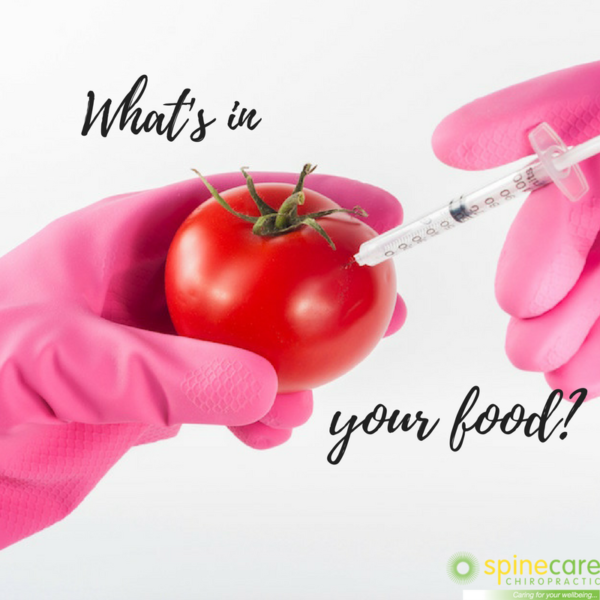Are food additives stressing your body out?

Hot cross buns with spirals of steam and half-melted butter.
Family picnics with bowls of chips, dips and lollies.
And chocolate! Foil-wrapped eggs, bunnies, bears and bars leaving a glittering trail in the garden.
Easter is a time of gleeful indulgence, where kids and adults alike go hopping mad for treats.
But without raining on the fun, we’re here to draw attention to invisible nasties in your food – especially in processed, packaged, holiday fare.
These chemical stressors hold serious consequences for your health, and April is the time we get wise about problematic additives here at Spinecare.
(Before you ask: what the Haighs is a chemical stressor? we’ll be sharing the definition further down the page.)
Last April we helped you have your easter eggs and eat them too – by choosing quality over quantity, reducing your sugar intake and enjoying yourself at the same time. Keen to read it? Click here.
This month, we share how chemical stressors affect the body – with the who, what, where of food additives and common reactions.
First things first.
What is a chemical?
We hear that word a lot – often with a negative spin. But the truth is, everything made up of matter can be a chemical. Water is a chemical – hydrogen and oxygen, bound together. The flavours found in natural foods such as ‘vanilla’ and ‘chilli’ are chemicals. Salt is a chemical. But so are synthetic food additives that help preserve, enhance or otherwise change your food – and these are the things that can cause your body to react.
What is a chemical stressor?
A chemical stressor is something that places an extra burden on the body, activating the stress response and contributing to ill health – which can look and feel different for everyone. Sugar is a prime chemical stressor, as are unnatural additives, preservatives and colourings – often present in Easter goodies.
What common food chemicals should you look out for?
This Easter, pay attention to packaging and opt for more natural, less-processed and single-ingredient foods to reduce the chemical load.
The most problematic chemical stressors include: added sugar, sulfites, Benzoic acid, antioxidants (the added kind), aspartame, MSG, Tartrazine, nitrates and nitrites, some E numbers.
Could these symptoms be caused by chemical stressors and food additives?
You might be surprised to learn that the following conditions can all be caused – or exacerbated – by chemicals in your food.
→ Hyperactivity in kids
→ Headaches
→ Skin irritation and rashes
→ Immune problems – such as recurrent colds, flues, asthma or hayfever.
→ Digestive upset
→ Runny nose and watery eyes
→ Mood changes
The best way to sidestep symptoms and reduce the chemical load this Easter it to cook at home, shop for whole, fresh foods, pay attention to packaging and favour quality over quantity.
If you’re concerned you or your kids might be reacting to food chemicals, speak to your Spinecare chiropractor about holistic and natural ways you can reduce chemicals in your life.
Enjoy a happy, healthy holiday!

